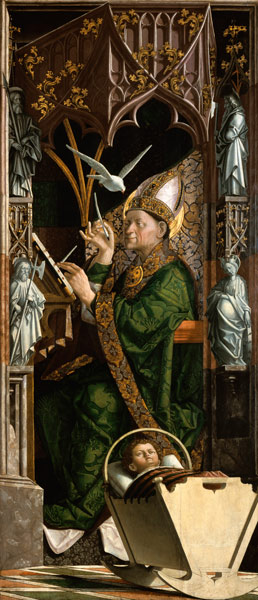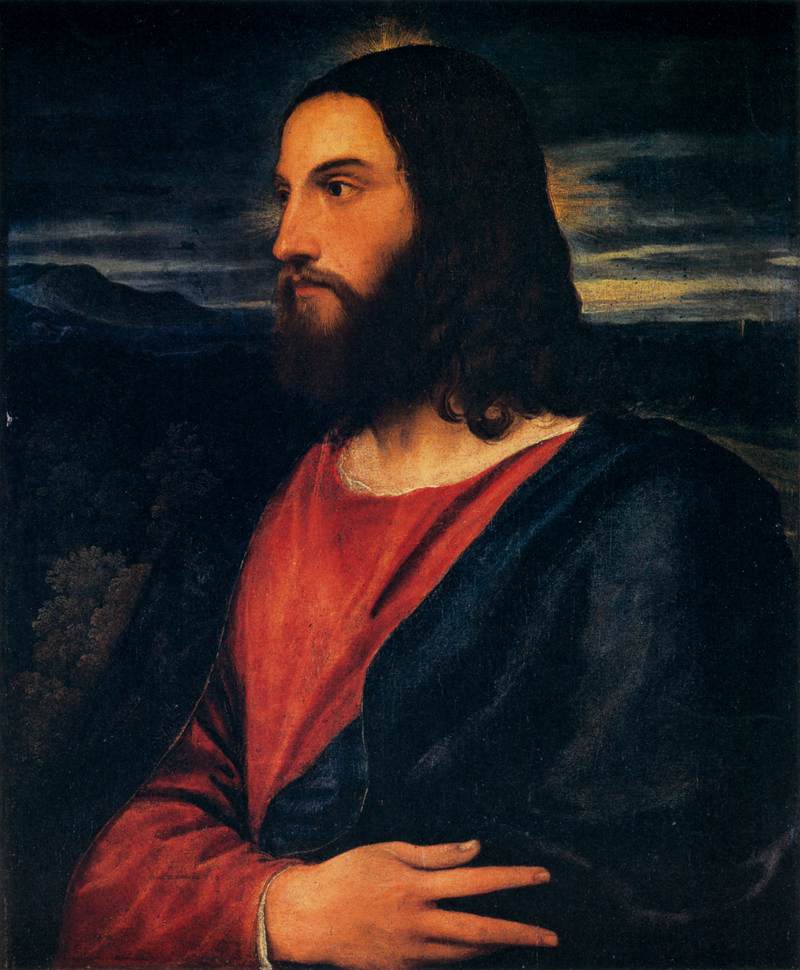|
Neustift Abbey
Neustift Abbey, or Novacella Abbey, (german: Kloster Neustift; it, Abbazia di Novacella) is an Augustinian abbey in the municipality of Vahrn in the northern Italian province of South Tyrol. It was elevated to the status of a basilica in May 1956 and received the honorific of a basilica minor by Pope Pius XII. History The history of the monastery dates back to 1140s, when Blessed Hartman was appointed head of the bishopric of Brixen. A 45-minute drive west of the abbey is the Brenner Pass, one of the principal passes through the Alps. For thousands of years, its low altitude and relatively temperate weather have provided a route connecting Germanic Europe to Italy via the Eisack river valley. During the Holy Roman Empire, the road crossed the Brenner Pass, allowing armies, merchants, and pilgrims to traverse the mountain range. By the 10th century, the settlement of ''Prihsna'', later known as Brixen, had sprung up, which became a stronghold of the Catholic Church. The ... [...More Info...] [...Related Items...] OR: [Wikipedia] [Google] [Baidu] |
Augustinians
Augustinians are members of Christian religious orders that follow the Rule of Saint Augustine, written in about 400 AD by Augustine of Hippo. There are two distinct types of Augustinians in Catholic religious orders dating back to the 12th–13th centuries: * Various congregations of Canons Regular also follow the Rule of Saint Augustine, embrace the evangelical counsels and lead a semi-monastic life, while remaining committed to pastoral care appropriate to their primary vocation as priests. They generally form one large community which might serve parishes in the vicinity, and are organized into autonomous congregations. * Several orders of friars who live a mixed religious life of contemplation and apostolic ministry. The largest and most familiar is the Order of Saint Augustine (OSA), founded in 1244 and originally known as the Hermits of Saint Augustine (OESA). They are commonly known as the Austin Friars in England. Two other orders, the Order of Augustinian Recollects a ... [...More Info...] [...Related Items...] OR: [Wikipedia] [Google] [Baidu] |
Michael Pacher
Michael Pacher ( 1435 – August 1498) was a painter and sculptor from Tyrol active during the second half of the fifteenth century. He was one of the earliest artists to introduce the principles of Renaissance painting into Germany. Pacher was a comprehensive artist with a broad range of sculpting, painting, and architecture skills producing works of complex wood and stone. He painted structures for altarpieces on a scale unparalleled in North European art. Pacher's masterpiece, the ''St. Wolfgang Altarpiece'' (1471–1481), is considered one of the most remarkable carved and painted altar shrines in all of European art. It contains scenes from the life of Jesus and the Virgin Mary.Osborne, p. 801. Pacher's other great work, the ''Altarpiece of the Church Fathers'', created in 1483 for Neustift Monastery, combined painting and sculpture to produce a unique art form. Pacher's influence was primarily North Italian, and his work shares characteristics with that of painters such as ... [...More Info...] [...Related Items...] OR: [Wikipedia] [Google] [Baidu] |
Choir (architecture)
A choir, also sometimes called quire, is the area of a church or cathedral that provides seating for the clergy and church choir. It is in the western part of the chancel, between the nave and the sanctuary, which houses the altar and Church tabernacle. In larger medieval churches it contained choir-stalls, seating aligned with the side of the church, so at right-angles to the seating for the congregation in the nave. Smaller medieval churches may not have a choir in the architectural sense at all, and they are often lacking in churches built by all denominations after the Protestant Reformation, though the Gothic Revival revived them as a distinct feature. As an architectural term "choir" remains distinct from the actual location of any singing choir – these may be located in various places, and often sing from a choir-loft, often over the door at the liturgical western end. In modern churches, the choir may be located centrally behind the altar, or the pulpit. The back-choir ... [...More Info...] [...Related Items...] OR: [Wikipedia] [Google] [Baidu] |
Holy Land
The Holy Land; Arabic: or is an area roughly located between the Mediterranean Sea and the Eastern Bank of the Jordan River, traditionally synonymous both with the biblical Land of Israel and with the region of Palestine. The term "Holy Land" usually refers to a territory roughly corresponding to the modern State of Israel and the modern State of Palestine. Jews, Christians, and Muslims regard it as holy. Part of the significance of the land stems from the religious significance of Jerusalem (the holiest city to Judaism, and the location of the First and Second Temples), as the historical region of Jesus' ministry, and as the site of the first Qibla of Islam, as well as the site of the Isra and Mi'raj event of 621 CE in Islam. The holiness of the land as a destination of Christian pilgrimage contributed to launching the Crusades, as European Christians sought to win back the Holy Land from Muslims, who had conquered it from the Christian Eastern Roman Empire in 6 ... [...More Info...] [...Related Items...] OR: [Wikipedia] [Google] [Baidu] |
Rome
, established_title = Founded , established_date = 753 BC , founder = King Romulus (legendary) , image_map = Map of comune of Rome (metropolitan city of Capital Rome, region Lazio, Italy).svg , map_caption = The territory of the ''comune'' (''Roma Capitale'', in red) inside the Metropolitan City of Rome (''Città Metropolitana di Roma'', in yellow). The white spot in the centre is Vatican City. , pushpin_map = Italy#Europe , pushpin_map_caption = Location within Italy##Location within Europe , pushpin_relief = yes , coordinates = , coor_pinpoint = , subdivision_type = Country , subdivision_name = Italy , subdivision_type2 = Region , subdivision_name2 = Lazio , subdivision_type3 = Metropolitan city , subdivision_name3 = Rome Capital , government_footnotes= , government_type = Strong Mayor–Council , leader_title2 = Legislature , leader_name2 = Capitoline Assemb ... [...More Info...] [...Related Items...] OR: [Wikipedia] [Google] [Baidu] |
Salzburg
Salzburg (, ; literally "Salt-Castle"; bar, Soizbuag, label=Bavarian language, Austro-Bavarian) is the List of cities and towns in Austria, fourth-largest city in Austria. In 2020, it had a population of 156,872. The town is on the site of the Roman settlement of ''Iuvavum''. Salzburg was founded as an episcopal see in 696 and became a Prince-Archbishopric of Salzburg, seat of the archbishop in 798. Its main sources of income were salt extraction, trade, and gold mining. The fortress of Hohensalzburg Fortress, Hohensalzburg, one of the largest medieval fortresses in Europe, dates from the 11th century. In the 17th century, Salzburg became a center of the Counter-Reformation, with monasteries and numerous Baroque churches built. Historic Centre of the City of Salzburg, Salzburg's historic center (German language, German: ''Altstadt'') is renowned for its Baroque architecture and is one of the best-preserved city centers north of the Alps. The historic center was enlisted as a UN ... [...More Info...] [...Related Items...] OR: [Wikipedia] [Google] [Baidu] |
Assling
Assling is a municipality in the district of Lienz in the Austrian state of Tyrol Tyrol (; historically the Tyrole; de-AT, Tirol ; it, Tirolo) is a historical region in the Alps - in Northern Italy and western Austria. The area was historically the core of the County of Tyrol, part of the Holy Roman Empire, Austrian Emp .... Population References External links Assling official website Cities and towns in Lienz District {{Tyrol-geo-stub ... [...More Info...] [...Related Items...] OR: [Wikipedia] [Google] [Baidu] |
Völs Am Schlern
Völs am Schlern (; it, Fiè allo Sciliar ; lld, Fíe or ), often abbreviated to Völs, is a municipality in South Tyrol in northern Italy. It is located at the foot of the Schlern mountain, about east of Bolzano. Geography As of November 30, 2010, it had a population of 3,463 and an area of .All demographics and other statistics: Italian statistical institute Istat. The municipality of Völs am Schlern contains the ''frazioni'' (subdivisions, mainly villages and hamlets) Blumau (Prato all'Isarco), Oberaicha (Aica di Sopra), Peterbühl, St. Anton (S. Antonio), Obervöls (Fiè di Sopra), Prösels (Presule), Prösler Ried (Novale di Presule), St. Kathrein (Santa Caterina), St. Konstantin (San Costantino), Ums (Umes), Unteraicha (Aica di Sotto), Untervöls (Fiè di Sotto), and Völser Ried (Novale di Fiè). Völs am Schlern borders the following municipalities: Kastelruth, Karneid, Ritten and Tiers. Prösels Castle is also located in the municipality. History The hamlet appears ... [...More Info...] [...Related Items...] OR: [Wikipedia] [Google] [Baidu] |
Olang
Olang (; it, Valdaora ) is a ''comune'' (municipality) in South Tyrol in northern Italy, located about northeast of the city of Bolzano. Geography As of 31 December 2015, it had a population of 3,132 and an area of .All demographics and other statistics: Italian statistical institute National Institute of Statistics (Italy), Istat. Olang borders the following municipalities: Bruneck, Mareo, Prags, Rasen-Antholz, and Welsberg-Taisten. Frazioni The municipality of Olang contains the ''frazione, frazioni'' (subdivisions, mainly villages and hamlets) Geiselsberg (Sorafurcia), Mitterolang (Valdaora di Mezzo), Niederolang (Valdaora di Sotto) and Oberolang (Valdaora di Sopra). History Coat-of-arms The emblem is argent a bend (heraldry), bend Vert (heraldry), vert on which are represented three cart’s wheels. The wheels symbolize the villages of Mitterolang, Oberolang and Niederolang and their disposition in the valley. The emblem was granted in 1968. Society Linguistic distribu ... [...More Info...] [...Related Items...] OR: [Wikipedia] [Google] [Baidu] |
Saint Michael In The Catholic Church
Saint Michael the Archangel is referenced in the Old Testament and has been part of Christian teachings since the earliest times. In Catholic writings and traditions he acts as the defender of the Church and chief opponent of Satan, and assists people at the hour of death. A widely used "Prayer to Saint Michael" was brought into official use by Pope Leo XIII in 1886 and was recommended by Pope John Paul II in 1994. In scripture Michael is mentioned by name five times in the Bible. * , Gabriel says, "...but the prince of the kingdom of Persia stood in my way for twenty-one days, until finally Michael, one of the chief princes, came to help me." * , "No one supports me against all these except Michael, your prince, standing as a reinforcement and a bulwark for me." * , "At that time there shall arise Michael, the great prince, guardian of your people; It shall be a time unsurpassed in distress since nations began until that time." * , "Yet the archangel Michael, when he argued with ... [...More Info...] [...Related Items...] OR: [Wikipedia] [Google] [Baidu] |
Redeemer (Christianity)
In Christian theology, Jesus in Christianity, Jesus is sometimes referred to by the title Redeemer. This refers to the Christian soteriology, salvation he accomplished, and is based on the metaphor of Redemption (theology)#In Christianity, redemption, or "buying back". In the New Testament, ''redemption'' is used to refer both to deliverance from sin and to freedom from captivity. Although the gospels do not use the title "Redeemer", redemption is used in several of Pauline epistles, Paul's letters. Leon Morris says that "Paul uses the concept of redemption primarily to speak of the saving significance of the death of Christ." Universality The New Testament speaks of Christ as the one Saviour for all people.On Christ's role as universal Saviour, cf. Gerald O'Collins, ''Salvation for All: God's Other Peoples'', OUP (2008). The First Epistle of John says that Jesus is "the propitiation for our sins and not for ours only but also for the sins of the world" (wikisource:Bible (Ameri ... [...More Info...] [...Related Items...] OR: [Wikipedia] [Google] [Baidu] |







